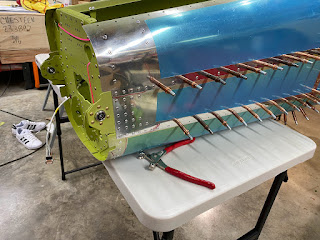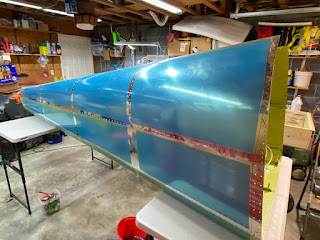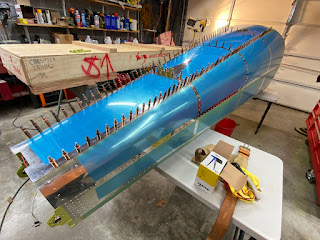Decided to go ahead and assemble the stabilator trim motor assembly since I have the parts all ready to go. - 1.75 man hours.
Started by riveting on the reinforcement tabs to the pivot ears of the bracket that holds the trim servo.Installed the snap bushing. Weird how Van's puts this hole so close to the edge that it leaves a notch in the part.
I did not get any pics of the process of filing these bushings to the correct width. Van's used to be known for stating "You are building an airplane, not a Swiss watch!". That has obviously changed because there are some critical dimensions that are emphasized in several places on this build so far.
Getting this clocked correctly was a pain in the rear! The bushing has to be shortened to get the clevis perpendicular to the server housing. Twice I went too far and had to remove more material. Finally nailed it. You will need some Red Lock-Tite to assemble this!
Fastened the trim servo to the tray with the hardware specified with the exception that the plans call out a non stainless screw but all that are provided in the hardware kit are stainless.
Stripped and crimped the pins on the servo power and potentiometer leads. Inserted them into the 9 pin D-shell connector. Temporarily installed the hardware that will eventually hold the connector together and to the tray.
This is the second time Van's has you squeeze 3/32 universal head rivets. Problem is they do not list a 3/32 universal head rivet set on the required tools list. Luckily I have one in my arsenal.
The clevis plates get riveted to the pushrod using these sealed blind rivets that are normally used to put fuel tanks together. I imagine the small clearance inside the tube is why these were selected. The opposite side actually interferes with the setting of the rivet so you have to push in toward the pushrod as you pull the rivet.
Done!





































































